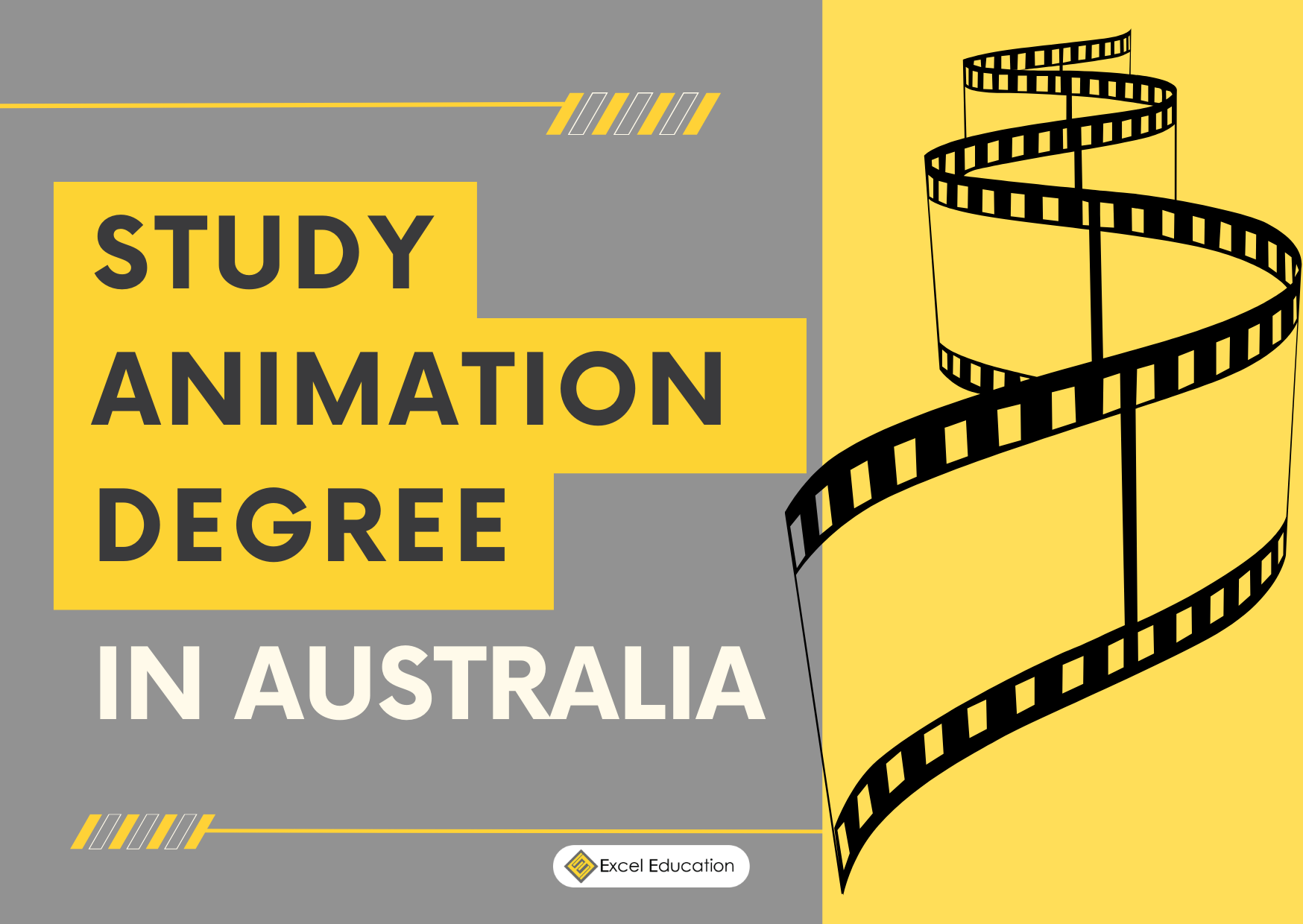
What is Animation?
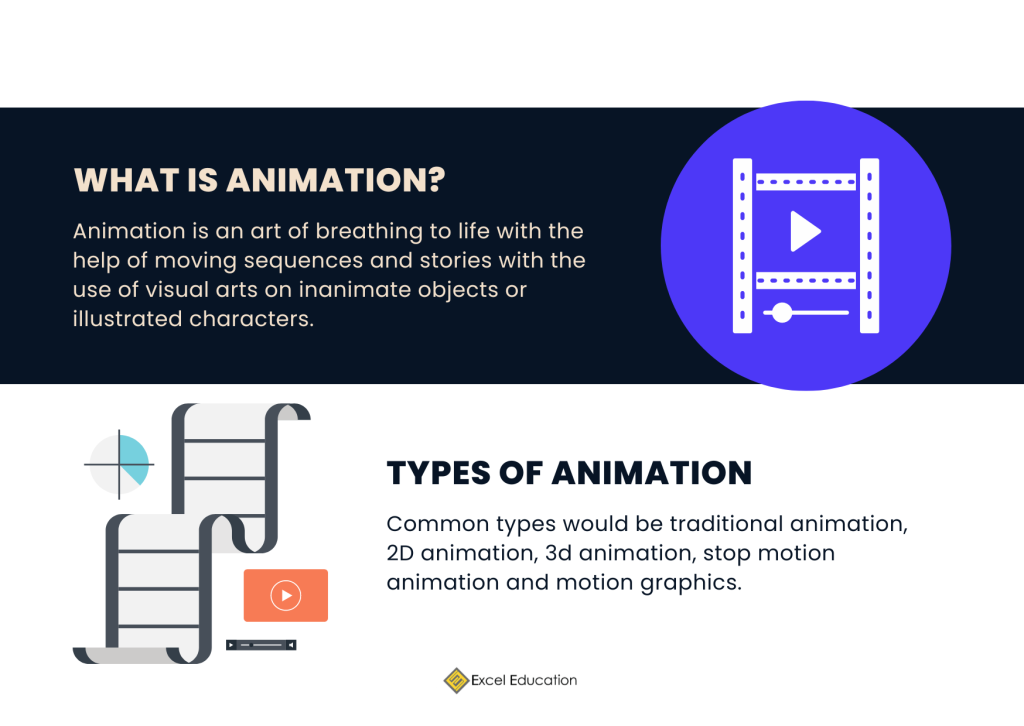
Animation is an art of breathing to life with the help of moving sequences and stories with the use of visual arts on inanimate objects or illustrated characters. It consists of making a sequence of pictures or frames, so arranged in rapid succession—the eyes seeing them nonliving—appear to reproduce motion.
Animated movies are one of the branches of cinematography, which belong to a huge amount of genres and styles that range from traditional, hand-produced cartoons to modern ones in 3D computer-generated imagery (CGI), where 3D modelling helps the makers of animated films put on the screen everything their fantasy tells them to, be it a world or a narrative.
Types of Animations
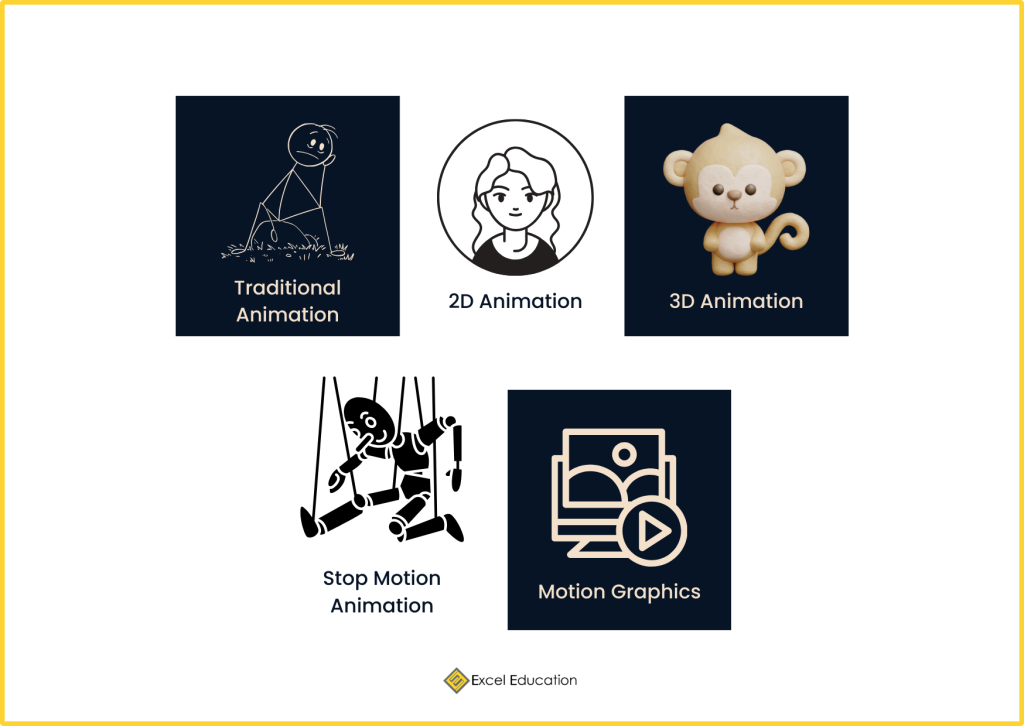
- Traditional Animation: Every frame in this technique is crafted by hand-drawn. It is a very time-consuming method, but it gives very smooth movement, so it is used in classic cartoons most of the time.
- 2D Animation: The vector-based animation produced through this digital technique is flexible and is usable on either web or TV since it contains fluent transitions.
- 3D Animation: This kind of animation creates a realistic three-dimensional space and provides realism and depth to the surroundings and characters in movies and games.
- Stop Motion Animation: This involves shooting a physical object frame by frame. Movement occurs when the play sequence is viewed; therefore, it has a very unique textured look.
- Motion Graphics: A technique with the purpose of combining graphic design and animation. Motion graphics are a way to animate text, logos, and shapes which is commonly present in advertising and promotional videos.
Key Skills Needed to Become an Animator
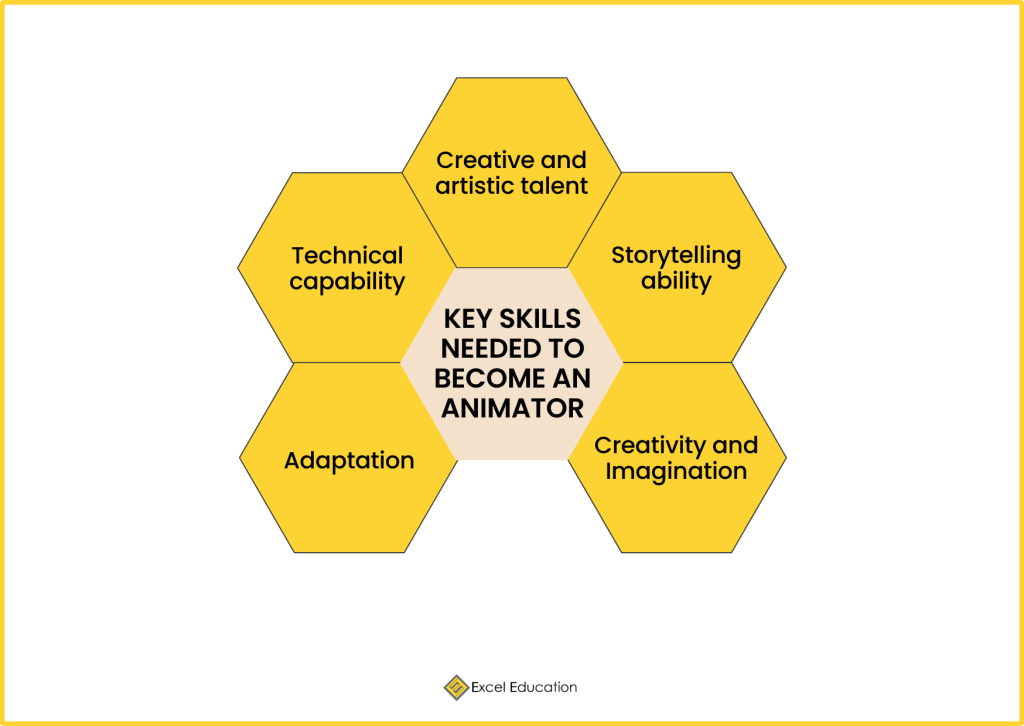
Creative and artistic talent: Animators should be artistic with a lot of creativity. This is one of the best skills that the characters and the scenes could bring to life easily with a lot of creativity and style.
Technical capability: This is the capability in the use of animation software and tools such as Adobe After Effect or Blender. Animators need to be in a position of navigating through the technologies in the creation and production of quality work.
Storytelling ability: This is important in animation, as it involves the use of narratives told in visual media. Animators have to adapt scripting into compelling visual stories.
Adaptation: The world of animation is characterised by constant and rapid change, with new technologies and styles. This calls for continuous adaptation of animators to new learning tools and trends.
Creativity and Imagination: For creativity, it gives birth to innovation in animations; imagination makes creative types dream up new characters, worlds, and stories for their work. Imagination definitely makes the difference between the memorable types of animations and the countless others.
Career Options with a Degree in Animation
With an animation degree, you are not limited to animator jobs only. Following are a few career options that you can consider as well:
- Motion graphics designer
- Art director
- Digital artist
- Concept artist
- Production designer
- VFX artist
- Advertising professional
- Computer game developer
- Multimedia designer
- Editors and colourists
Academics entry requirement for Animation degree in Australia
Academic Entry
Academic entry | Minimum Score |
STPM | GPA 2.33 |
Matriculation | GPA 2.75 |
A-Levels | Aggregate of 6 |
UEC | Average GPA of 2.20 |
IB Diploma | 25 |
Australian Matriculation (ATAR) | ATAR 70 |
Canadian Pre-University (CPU) | Average of 61.3% |
Note: Universities may have different requirements. To learn more, get in touch with us!
English Language Entry Requirements
Entry Level | Minimum Score |
IELTS | 6.5 |
TOEFL | 79 |
Pearson Test of English (PTE) | 58 |
Note: Universities may have different English Language requirements. To learn more, get in touch with us!
Top Universities to study Animation in Australia
1. Royal Melbourne Institute of Technology (RMIT)
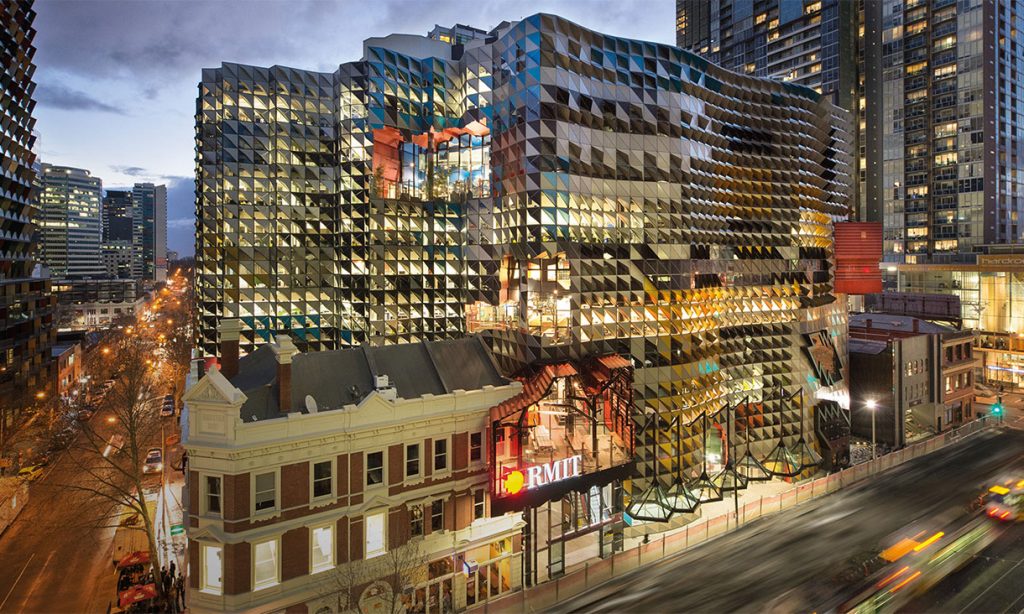
The Royal Melbourne Institute of Technology (RMIT) is an Australian public research university based in Melbourne, Victoria. It was established in 1887 by Francis Ormond and started as an evening school intended to open courses in art, science, and technology, which were responses to the industrial revolution in Australia.
RMIT’s art, design, and animation courses regularly rank within the top 10 internationally, and are regarded as some of the best available in Australia. The majority of teaching staff are practising artists, designers, and industry practitioners. They are experienced educators who have strong industry and research field links.
Programme Offered | Bachelor of Design (Animation and Interactive Media) |
Duration | 3 years |
Intake | February, July |
Indicative Fee (2024) | International students: AU$129,600 |
Contact us right now for a free consultation if you’d like more details about the costs, the format of the programme, and the entry requirements!
2. University of Technology Sydney (UTS)

The University of Technology Sydney (UTS) is a leading public research university located in Sydney, New South Wales, Australia. UTS is a founding member of the Australian Technology Network (ATN), a leading member of Universities Australia (UA), and a member of the Worldwide Universities Network (WUN).
Benefits of the Bachelor of Animation Production link at UTS are the industry connections linked to UTS that help provide that competitive advantage to the students. Students will be able to work on live projects with active partners, such as ABC Podcasts, VIVID, and open new collaborations with some of the most prestigious international universities right from the Annecy MIFA campus.
Programme Offered | Bachelor of Animation Production |
Duration | 3 years |
Intake | February |
Indicative Fee (2024) | International students: AU$134,784 |
Contact us right now for a free consultation if you’d like more details about the costs, the format of the programme, and the entry requirements!
3. Queensland University of Technology (QUT)

Located in the coastal city of Brisbane, Queensland, the Queensland University of Technology (QUT) is a top Australian public research university. QUT earlier operated with the name “Queensland Institute of Technology (QIT)” since its establishment in 1965, before receiving the royal charter to operate under the status of a university from an Act of Parliament in Queensland in 1988.
At QUT, students learn from the best in the industry where students can gain the skills and connections they need today and the career agility required in the future. QUT designs, communicates, creates toward the future—an environment for a knowledge and technology-driven world.
Programme Offered | Bachelor of Fine Arts (Animation) |
Duration | 3 years |
Intake | February |
Indicative Fee (2024) | International students: AU$102,900 |
Contact us right now for a free consultation if you’d like more details about the costs, the format of the programme, and the entry requirements!
4. Deakin University
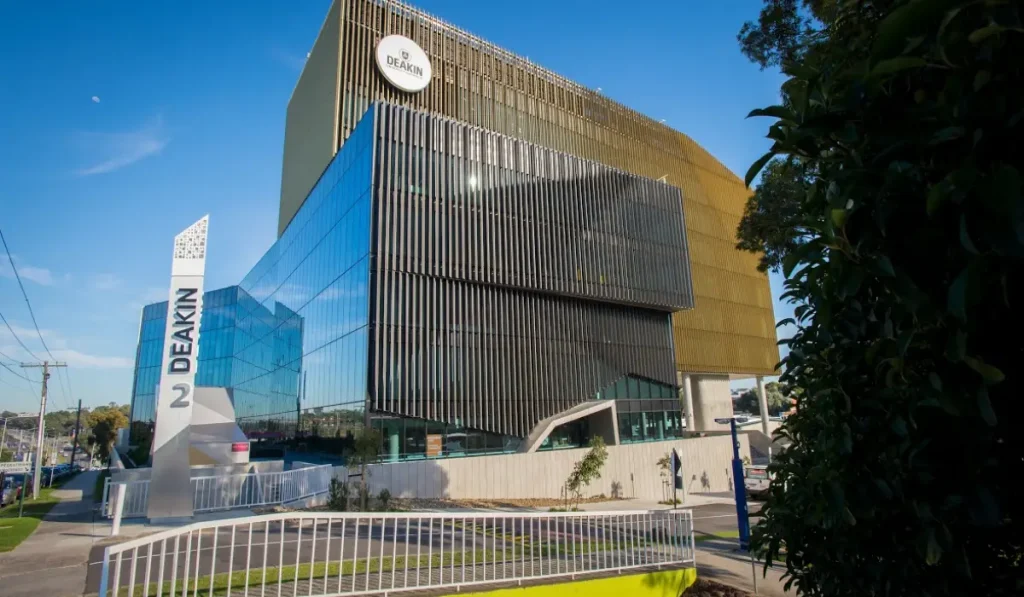
Deakin University is a public university in the state of Victoria, Australia, with campuses in Melbourne. It was given its name in 1974 after the Australian Prime Minister, Alfred Deakin. The university offers undergraduate and postgraduate courses in arts, business, education, engineering, health sciences, law, and science, among many others. This essentially brings an all-round approach to education from the same university.
Through real-world learning, driven with progressive thinking, Deakin will prepare students to take on the real world. In addition, this will give valuable industry work with internship opportunities, such as crewing on sports broadcasts facilitated by the Deakin LiveStream OB van. At the time of graduation, students will have a creative portfolio, professional network in the making, and indispensable industry knowledge for them to set up their own sustainable creative career in this wide world of screen production.
Programme Offered | Bachelor of Film, Television and Animation |
Duration | 3 years |
Intake | March, July, November |
Indicative Fee (2024) | International students: AU$113,400 |
Contact us right now for a free consultation if you’d like more details about the costs, the format of the programme, and the entry requirements!
5. Curtin University
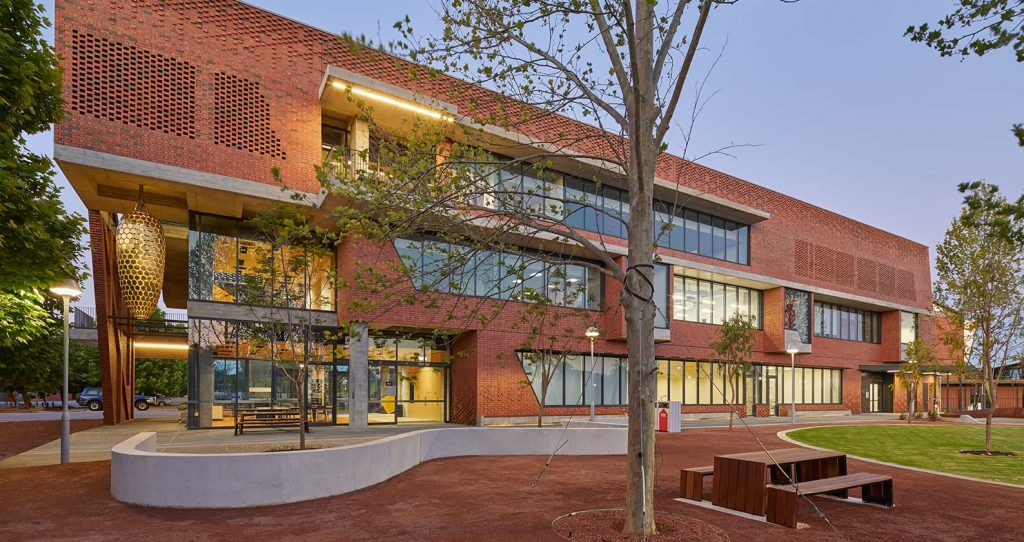
Curtin University is a leading Australian public research university, located in Bentley, Perth, Western Australia. Formerly, it was known as Curtin University of Technology and also known as Western Australian Institute of Technology (WAIT). The institution got its name after the prime minister of Australia in 1941, John Curtin.
This flexible degree will provide a series of majors to produce practical skills in the minds of the students from a global point of view and will allow them to go ahead with their career throughout the world. For this 3 year programme, students will take part in all project-based activities and work with students from different disciplines, just like they are in the real industry. Students will use the standard tools and software based on the industry and eventually walk out with the full portfolio in their hands for the employers.
Programme Offered | Bachelor of Design Major in: Animation and Game Design |
Duration | February, July |
Intake | February, July |
Indicative Fee (2024) | International students: AU$91,404 |
Contact us right now for a free consultation if you’d like more details about the costs, the format of the programme, and the entry requirements!
For more information regarding the university, programme offered, entry requirements and fees, contact Excel Education.
About The Author

Brenda
Brenda enjoys action, thriller, psychological, and comedy movies as well as TV shows very much. Oftentimes, she really enjoy learning new stuff.

